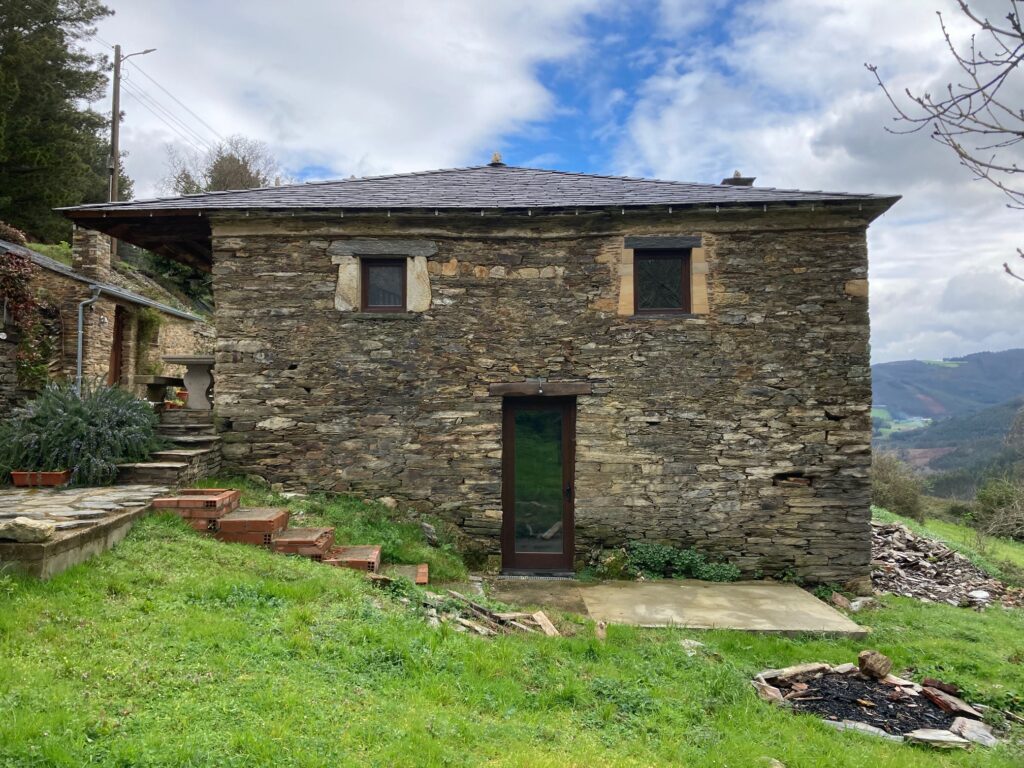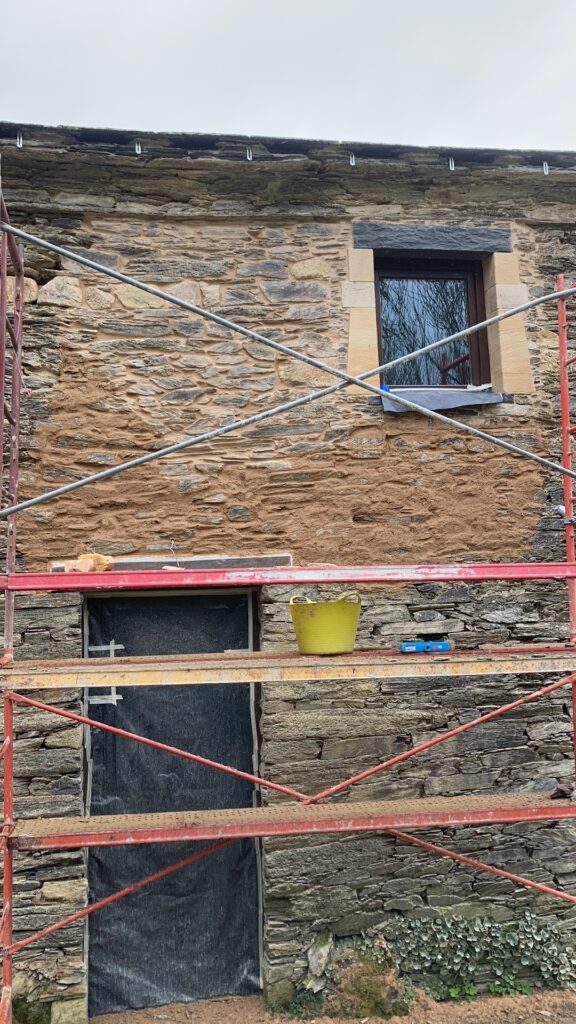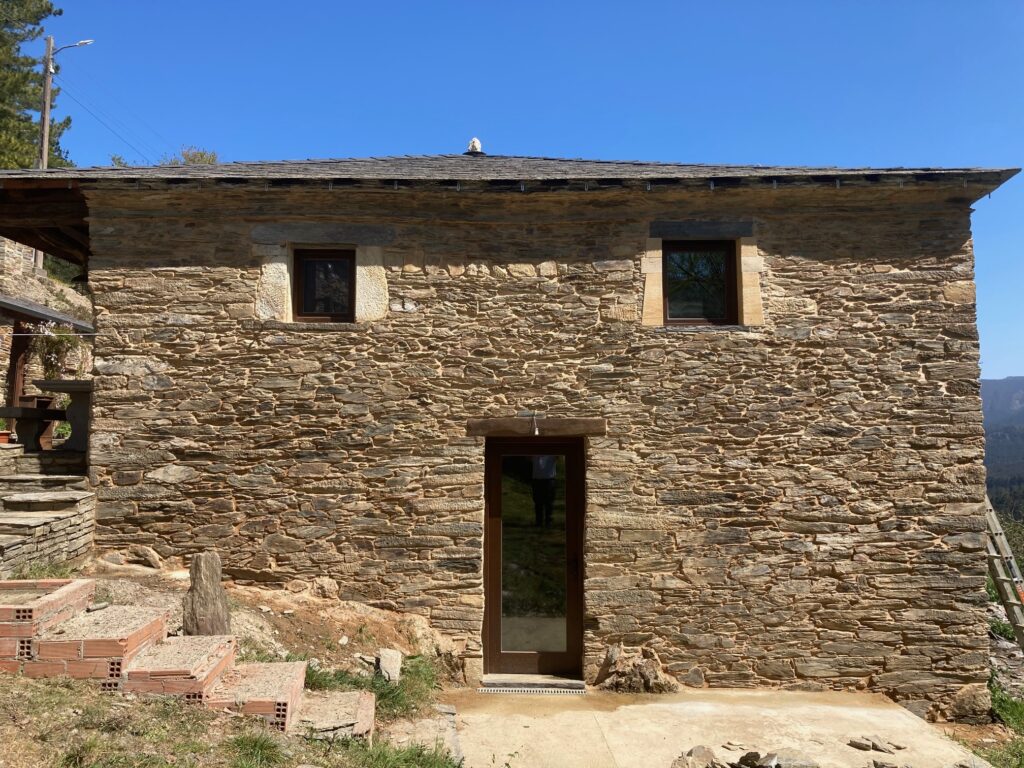While the literal translation of manaña is ‘morning’, it is often used to mean ‘tomorrow’ as in ‘manaña por la manaña’ (tomorrow morning), which is confusing in itself. Outside Spain it is widely used as a derogatory term, somewhat unfairly in our experience, for a lazy attitude to work which loosely translates as ‘why do something today when it can be put off until tomorrow’.
A few weeks ago, one of my tomorrows finally arrived, a task which I had delayed and delayed, but which, with the inside of the house complete bar furnishing and a few wet weather jobs, I could put off no longer. I had to start the external pointing.
 I’ve already done plenty of pointing, several of the inside walls are done, as is the interior and exterior of the bread oven, and the area around the patio, but the big house is in a totally different league. I have calculated that it is around 120m2 (around 400 ft2) of small to large random stone in various states of disrepair and some of which is at around 5m (16’) in height requiring scaffolding and working at height.
I’ve already done plenty of pointing, several of the inside walls are done, as is the interior and exterior of the bread oven, and the area around the patio, but the big house is in a totally different league. I have calculated that it is around 120m2 (around 400 ft2) of small to large random stone in various states of disrepair and some of which is at around 5m (16’) in height requiring scaffolding and working at height.
I know from experience that I average around 2m2 (6’ to 7’) in a day through the five stages of pointing and it is a thankless and soul destroying task which requires patience and diligence, two qualities which I don’t have in abundance.
Each square centimetre of wall requires five, time consuming, processes;
- Rake out the old mud mortar (literally) from between the stones and remove any old render (lime mortar) which clad the entire building a century or so ago. This involves the use of a small raking tool, the size of a hammer, with a lethal point at one end which resembles and ice pick and a sharpened blade at the other end to hack down the joints. Each piece of stone needs to have a border around its entire perimeter which is deep enough to receive the pointing material (see stage 3).
- Once all the mortar is removed the entire wall needs to be swept clean of dust either with a brush or using an air line attached to a compressor so that there is a clean contact for the pointing material.
- The pointing material (EP2H) is then manually thrown, pushed and generally cajoled into every crevice using protective gloves (that one was only determined after the chemicals stripped the skin off the back of my fingers the first time I tried wearing normal cotton work gloves).
- After a short, temperature dependent time, each joint is worked with a soft brush to remove the excess material and as the material starts to harden increasingly stiff brushes are used until the pointing material is removed right into the joint and the stone is allowed to stand proud.
- A couple of days after stages 1 to 4 are completed the whole wall needs to be scrubbed down with Agua Fuerte (brick acid/nitric acid), which stinks and brings on nausea if used in a confined space, before being hosed off with clean water.
 And that’s why I can manage about 2m2 per day, my only company being Spotify soothing my tormented soul by playing uplifting tunes, and the occasional visit of a neighbour making encouraging sounds about how good it looks and what a change it has made.
And that’s why I can manage about 2m2 per day, my only company being Spotify soothing my tormented soul by playing uplifting tunes, and the occasional visit of a neighbour making encouraging sounds about how good it looks and what a change it has made.
Just over a fortnight after starting on the first wall of the house, and 17 x 25kg sacks of mortar, I hosed off the final section and stood back to admire my handiwork.

